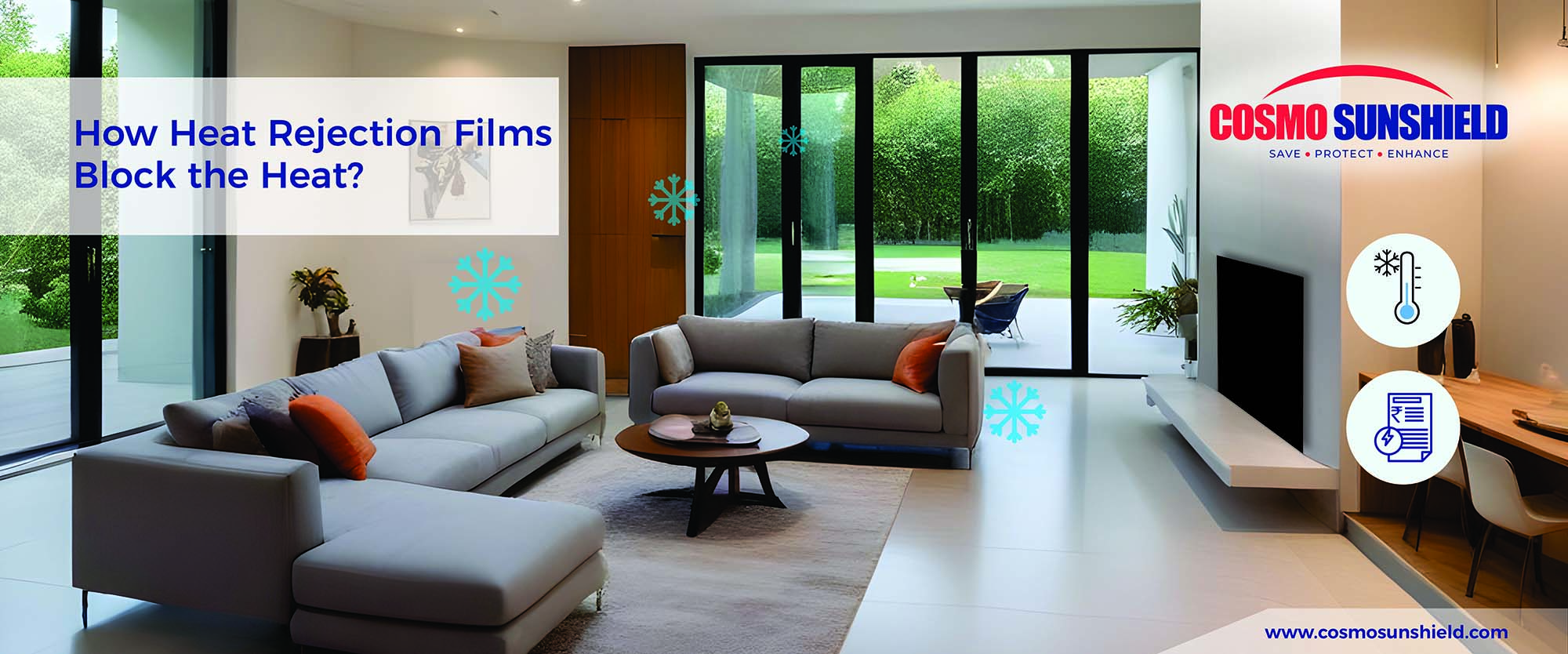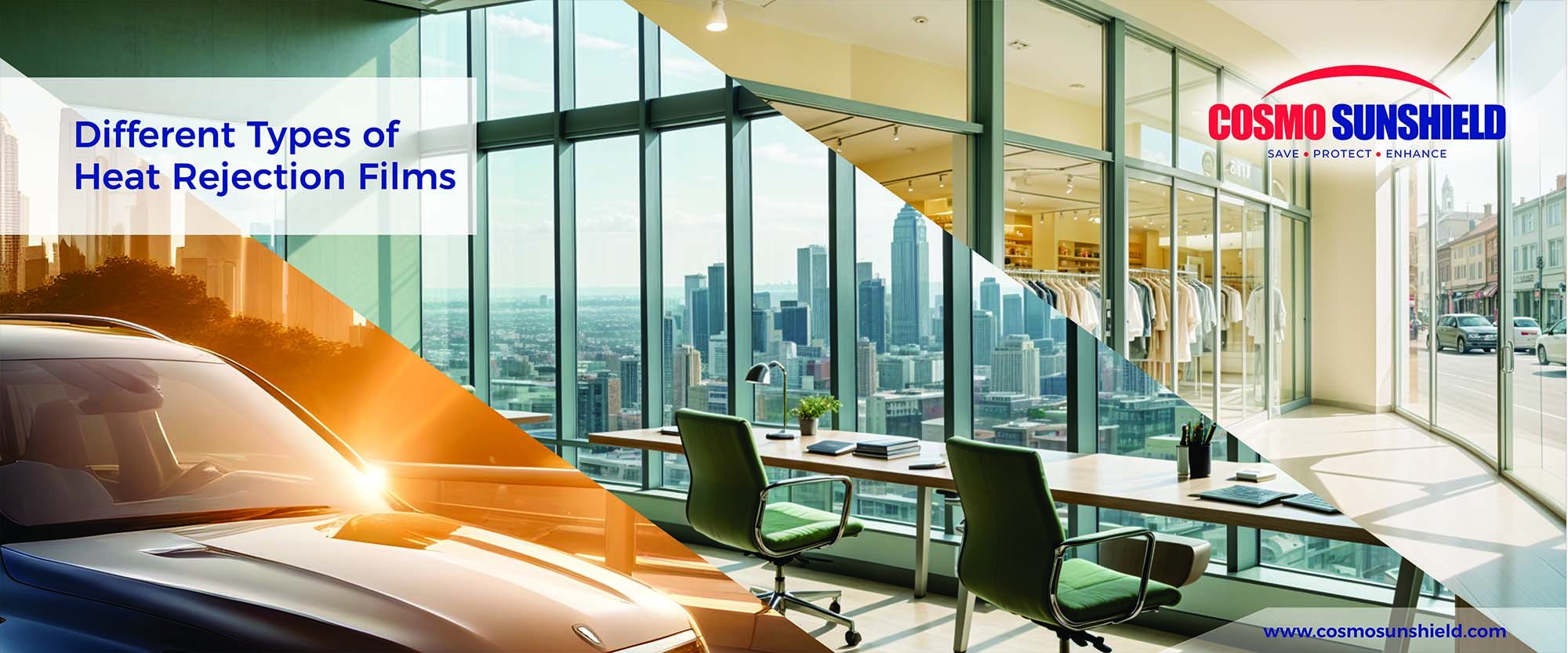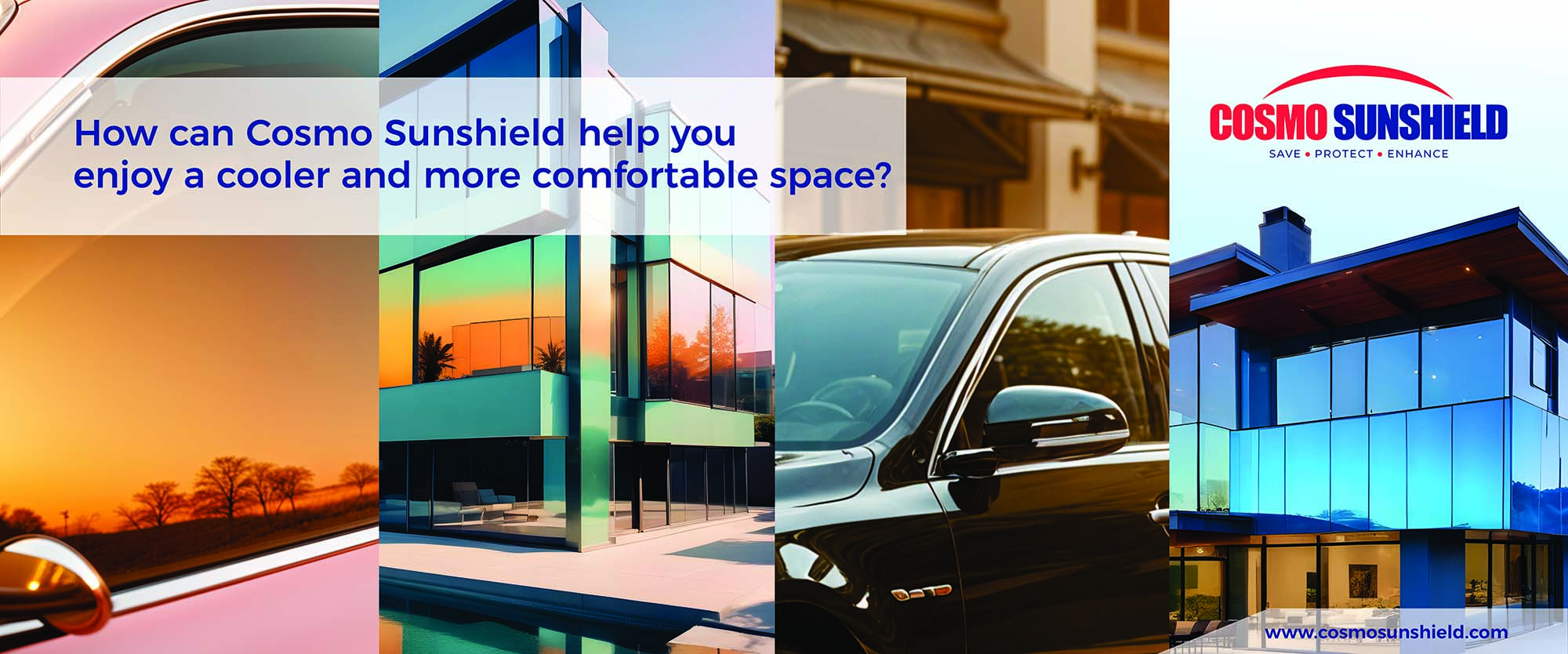Heat Rejection Films: Fact or Fable
Published on : May 29,2024
Is your home feeling like a furnace during the summer heat?
Burning up this summer? Soaring temperatures and relentless sunshine can turn your home into a furnace. But what if there was a way to stay cool and enjoy natural light at the same time? This blog explores the science behind heat rejection films, unraveling the truth: are they a magical solution or just a summer fad? Dive in to discover how these window films work, their impact on your comfort and energy bills, and how they can transform your space.
Keeping Cool with Heat Rejection Films: Fact or Fiction?
We established that the scorching summer sun can turn your haven into a furnace. But before diving into the world of heat-rejection window films, let's understand what they are and the science behind their cooling magic.
Heat rejection films, also known as sun control films or solar control films, are thin layers of films applied directly to your windows. These films are much more than just window tinting. They act as microscopic shields, packed with technology to combat heat gain.
Sun's Sneaky Heat Gain Trick: How Traditional Windows Fall Short?
Imagine sunlight entering through your windows. It carries three types of energy: visible light, UV light and invisible infrared (IR) radiation. While visible light allows us to see, infrared radiation translates to heat and UV rays fades color. Traditional glass allows most sunlight to pass through, including a significant portion of IR rays and UV rays, leading to a warmer interior.
Science Behind the Shield: How Heat Rejection Films Block the Heat

Here's where heat rejection window films come in as your thermal guardian:
- Selective Filtering: These films contain nano level particles that act like a filter. They cleverly allow most visible light to pass through, maintaining brightness, while significantly reducing the amount of infrared radiation entering your space.
- Solar Absorption: Some heat rejection films go a step further. They not only filter but also absorb a portion of the infrared heat. This absorbed heat is then gradually released back outside, minimizing the overall temperature increase indoors.
The Result: A Cooler You and a More Energy-Efficient Home
By effectively blocking and absorbing infrared heat, heat rejection films or Solar Films can significantly impact your comfort and wallet:
- Reduced Indoor Temperature: Studies suggest a potential reduction in indoor temperature of 5-10 degrees Fahrenheit, creating a noticeably cooler and more comfortable living space.
- Energy Savings: With less reliance on air conditioning to combat the heat, your energy consumption drops. This translates to lower electricity bills, offering significant cost savings throughout the summer months.
Beyond Homes: A Broader Spectrum of Benefits
The effectiveness of heat rejection films isn't limited to just homes. Here's a glimpse of their benefits in different environments:
- Offices: Maintaining a cool and comfortable working environment is crucial for employee productivity. Heat rejection films can make a significant difference in office spaces, reducing heat gain and creating a more focused atmosphere.
- Retail Stores: Excessive heat can deter customers from browsing comfortably. Heat rejection films can help maintain a cooler shopping environment, leading to a more pleasant customer experience and potentially increased sales.
- Vehicles: Parked cars become scorching hot under the sun. Heat rejection window films for car windows can significantly reduce heat gain inside the vehicle, making it more comfortable upon entering and protecting upholstery from sun damage.
Now that we understand the science and benefits of Sun Control Films or heat rejection films, let's explore the different types available and how to choose the right one for your climate in the next section.
A World of Options: Different Types of Heat Rejection Films

There are several varieties of heat rejection window films, and each has unique characteristics, such as:
- Dyed Films: These are the most affordable options, offering basic heat rejection but potentially fading over time. They may also slightly alter the color perception when looking outwards.
- Reflective Films: These films contain a metallic layer, reflecting a significant amount of solar heat. They are highly effective and have a mirrored appearance from the outside.
- Sputtered Films: These window films use a superior manufacturing process for exceptional heat rejection and durability.
- Ceramic Films: These high-performance films offer excellent heat rejection while maintaining a clear appearance. They are a popular choice for those who prioritize both aesthetics and functionality, making them ideal for homes and offices. They are also known for their durability.
Choosing the Right Film for Your Climate
The effectiveness of heat rejection films can vary depending on your climate. Here's a breakdown to consider:
- Hot and Sunny Climates: For these climates, opt for films with a low Solar Heat Gain Coefficient (SHGC) and high TSER value. This indicates the film's ability to block solar heat gain.
- Moderate Climates: Films with a balanced TSER and Visible Light Transmission (VLT) rate might be preferable for these climates. VLT signifies the amount of visible light allowed through. This ensures sufficient natural light while maintaining heat control.
Understanding these factors will help you choose the most suitable heat-rejection film for your needs.
Ready to Beat the Heat and Save Energy?

Now that you've explored the science behind heat rejection films and their various benefits, you might be wondering:
How can Cosmo Sunshield help you enjoy a cooler and more comfortable space?
At Cosmo Sunshield, we offer a wide range of heat rejection films designed to meet your specific needs and climates. Our films are available in various shades and styles, allowing you to achieve the perfect balance between heat control, natural light, and aesthetics.
Visit our website today to explore our selection of heat rejection films and find the perfect fit for your home or business. We also offer a free consultation to help you choose the right film and ensure a flawless installation.




